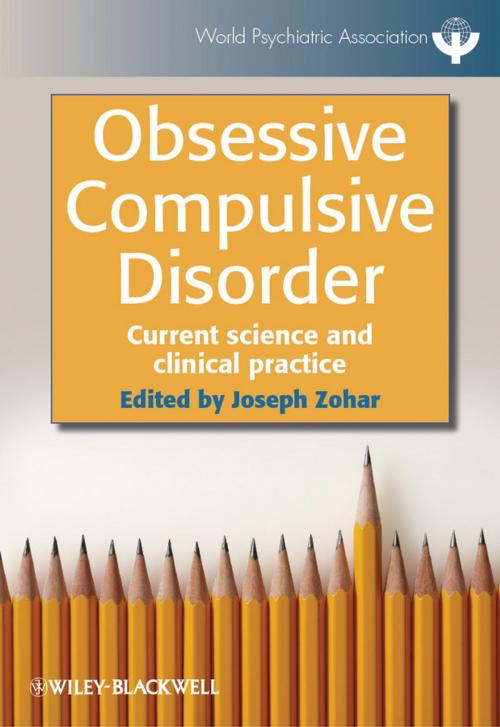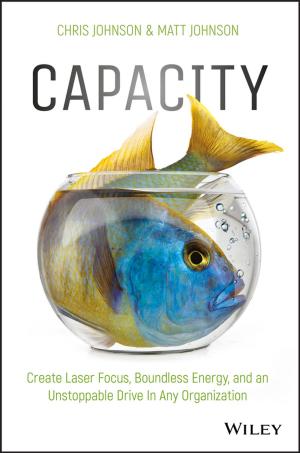Obsessive Compulsive Disorder
Current Science and Clinical Practice
Nonfiction, Health & Well Being, Medical, Specialties, Psychiatry| Author: | ISBN: | 9781118308011 | |
| Publisher: | Wiley | Publication: | May 31, 2012 |
| Imprint: | Wiley-Blackwell | Language: | English |
| Author: | |
| ISBN: | 9781118308011 |
| Publisher: | Wiley |
| Publication: | May 31, 2012 |
| Imprint: | Wiley-Blackwell |
| Language: | English |
Obsessive compulsive disorder (OCD) remains one of the most challenging disorders of the brain.
Contemporary conceptualization and therapeutic strategies are undergoing a revolution as a result of new insights derived from modern technological advances. This book was conceived in order to present this revolution to the reader. It covers current theories regarding the etiology of OCD, what is known about the genetics of this disorder, evidence from neuroimaging and a discussion of potential endophenotypes. There is an evaluation of current treatment approaches for the disorder, encompassing psychological, psychopharmacological and physical interventions, as well as a discussion of treatment resistance. The book considers methodological issues, plus reviews of OCD in pediatric populations. A summary chapter highlights some potential research avenues, in a discussion of the future directions in OCD.
Rather than provide comprehensive coverage, repeating material from standard psychiatry textbooks, this book focuses on recent information and its application, distinguishing it from other titles.
- If you work in children with OCD,
- If you are interested in genetics, neurocognition or brain imaging,
- If you work with patients and would like to improve your assessment in OCD and OCD Spectrum disorders, to update your therapeutic strategies and to get a handle on cutting edge developments in this intriguing field,
- If you are planning a research project in OCD and would like to get some hints from people who are research leaders in this field and also learn about methodological issues specific to OCD research,
then this book will be a valuable resource.
- A concise overview of the current state of the art in OCD assessment and treatment, including physical interventions and treatment resistance
- Focuses on scientific advances (including specific methodological issues) and how they can inform and benefit clinical practice
- Looks critically and broadly at the diagnostic classification, including the ongoing revision of the two major international systems
- Written by an A-list team of experts in the field who have a track record of being engaging authors
Obsessive compulsive disorder (OCD) remains one of the most challenging disorders of the brain.
Contemporary conceptualization and therapeutic strategies are undergoing a revolution as a result of new insights derived from modern technological advances. This book was conceived in order to present this revolution to the reader. It covers current theories regarding the etiology of OCD, what is known about the genetics of this disorder, evidence from neuroimaging and a discussion of potential endophenotypes. There is an evaluation of current treatment approaches for the disorder, encompassing psychological, psychopharmacological and physical interventions, as well as a discussion of treatment resistance. The book considers methodological issues, plus reviews of OCD in pediatric populations. A summary chapter highlights some potential research avenues, in a discussion of the future directions in OCD.
Rather than provide comprehensive coverage, repeating material from standard psychiatry textbooks, this book focuses on recent information and its application, distinguishing it from other titles.
- If you work in children with OCD,
- If you are interested in genetics, neurocognition or brain imaging,
- If you work with patients and would like to improve your assessment in OCD and OCD Spectrum disorders, to update your therapeutic strategies and to get a handle on cutting edge developments in this intriguing field,
- If you are planning a research project in OCD and would like to get some hints from people who are research leaders in this field and also learn about methodological issues specific to OCD research,
then this book will be a valuable resource.
- A concise overview of the current state of the art in OCD assessment and treatment, including physical interventions and treatment resistance
- Focuses on scientific advances (including specific methodological issues) and how they can inform and benefit clinical practice
- Looks critically and broadly at the diagnostic classification, including the ongoing revision of the two major international systems
- Written by an A-list team of experts in the field who have a track record of being engaging authors















